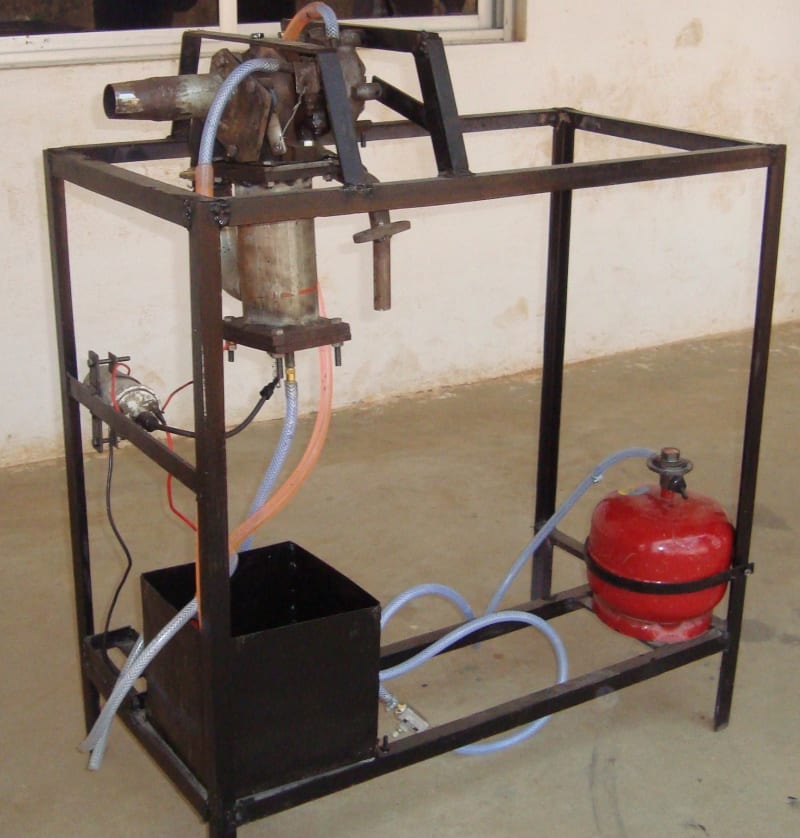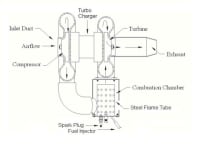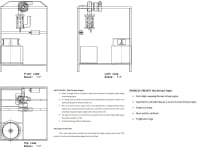Aviation is one of the main fields in transportation. Aside from being faster than piston engines, turbojets have greater reliability with about 99.9%. The manufacture of UAVs is quite multifaceted and is a challenging task. This homebuilt mini turbojet engine can be widely used for propelling UAVs and as auxiliary power units. Early turbojet engines consumed large amounts of fuel and did not produce high power output. Their weight to power ratio was poor. They would consume 1.2 to 1.5 pounds of fuel per hour for every pound of thrust they produced. Today’s turbofan engines consume as little as 0.25 pounds of fuel for each pound of thrust produced. This is far less than the best piston engines in use. We estimate that the homebuilt turbojet engine will use about one pound of fuel for each pound of thrust produced. This is not high efficiency, but when you consider the construction cost compared to a commercial jet engine the result is remarkable.
A turbojet engine is a reaction engine that discharges a fast moving jet of fluid to generate thrust by jet propulsion and in accordance with Newton's laws of motion. A turbojet engine can be broken down into five major subassemblies: the inlet duct, compressor, combustion chamber, turbine wheel, and exhaust outlet. When the engine is running, air is drawn into the compressor where it is compressed and the pressure is increased. It is then ducted to the combustion chamber where fuel is added and burned. The heat in the combustion chamber causes the air to expand before it exits through a nozzle and drives the power turbine. Turbine drives the compressor by means of a drive shaft. The remaining hot gases are expelled out the exhaust nozzle. Forcing the large amount of air taken into the engine and expelling it out the exhaust duct at a much higher velocity creates thrust. Here the turbojet engine uses the compressor and turbine from a common turbocharger. The turbocharger compressor serves the same function as the compressor on a commercial jet engine. The turbine on the turbocharger drives the compressor and the excess energy is expelled out the exhaust nozzle to provide thrust. The lower portion of the drawing shows the combustion chamber attached to the turbocharger. The combustor liner (with the holes), does not go all the way to the bottom of the combustor. Enough air is allowed to go into the burner to allow the correct fuel to air ratio and the rest is used as cooling air in the turbine. Without this cooling air, the turbine would get too hot and melt the blades. The blades are generally made from cast alloy, a nickel alloy, and can handle temperatures in excess of 2,000 deg. F. without damage.
A working prototype has been built with relatively simple manufacturing involved. Turbo charger, gas tank etc where purchased from third-parties while the combustion chamber, flame tube were cut in-metal tube. A commercial version would use liquid fuel for higher efficiency.
Like this entry?
-
About the Entrant
- Name:Shama K.v.
- Type of entry:teamTeam members:K.V.SHAMA,M.RAMESH,S.SREEKES,VISHNU MAHESH
- Software used for this entry:Auto CAD
- Patent status:none








